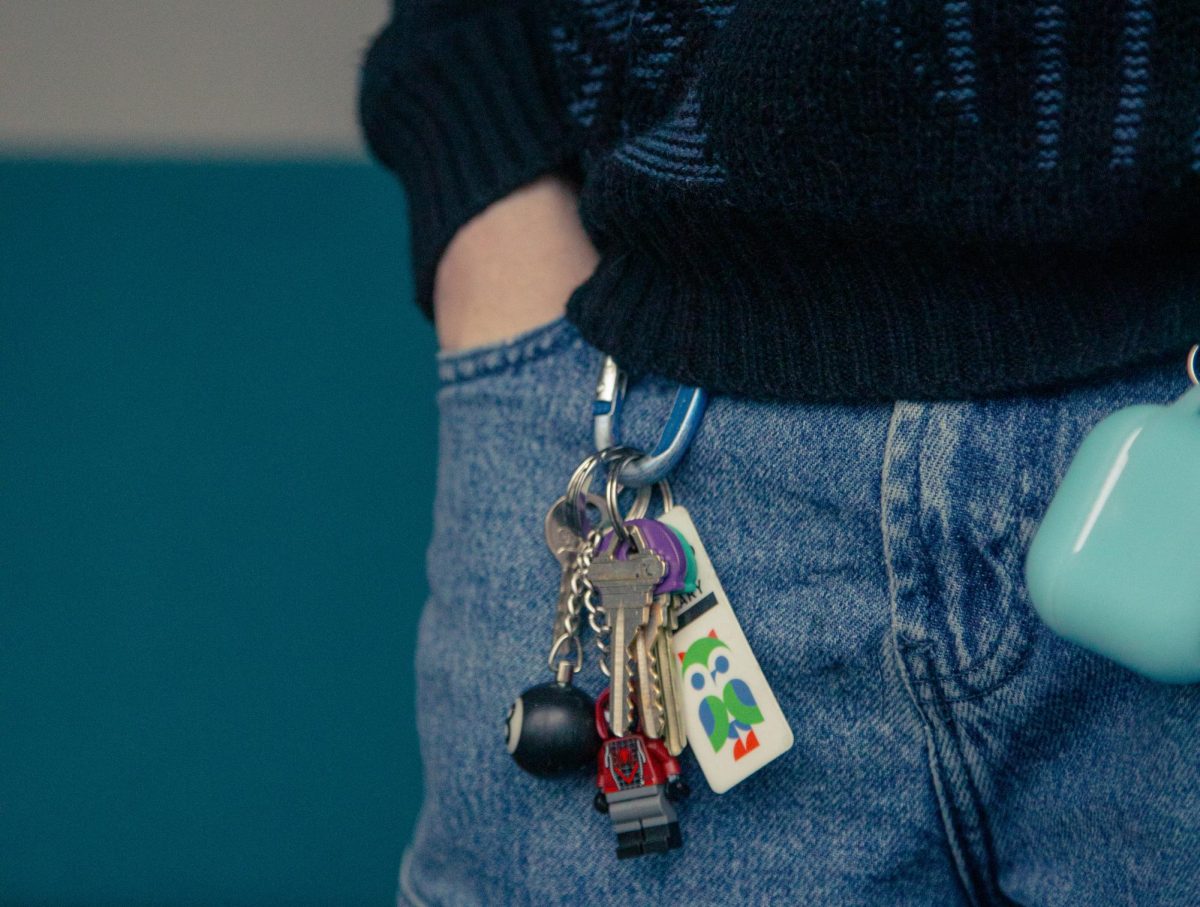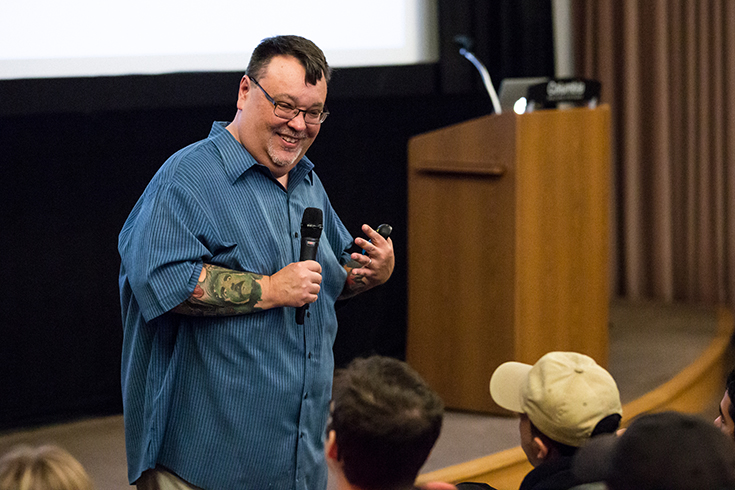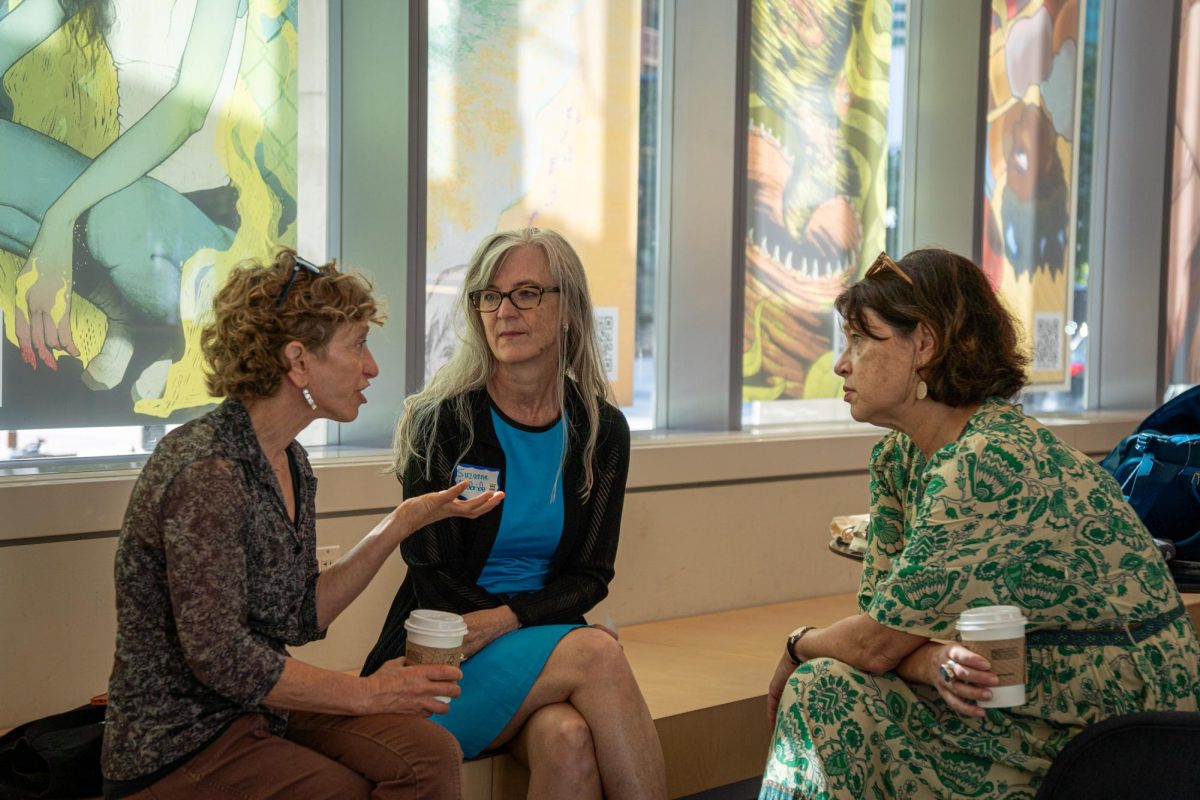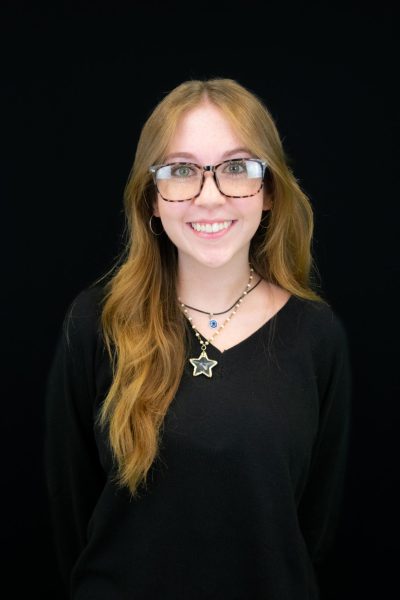Eighteen years ago, the United Nations General Assembly adopted April 2 to observe World Autism Awareness Day to promote understanding about autism.
First-year fashion studies major Louis Sampson said this day is important to recognize because “we’re not even a minority, we’re a majority.”
About 1 in 36 children in the United States are diagnosed with autism by the age of 8, according to the Centers for Disease Control.
Autism is a complex developmental condition that sometimes is associated with repetitive behavior, restricted interests and difficulties with social communication. From an autistic person’s perspective, autism is part of their identity and characterized by the way they see the world.
Sampson said they “put on a performance constantly” and “conceal” their autistic identity due to rude comments from others and a lack of understanding about autism.
“It’s suffocating,” Sampson said. “It’s hard, it’s a struggle, it’s a challenge.”
Sampson also said being under the pressure of being “unemotionally available” burns them out physically and emotionally from holding their true self in all the time.
“In a way, it’s degrading and it’s horrible,” they said. “Having to do it constantly, you start to forget your sense of self. You start to forget who you are, what you’re doing, what you’re supposed to do and how you used to be. You forget the things about yourself because technically, you’re closing off a part of yourself that’s actually you.”
The term “autism” was first introduced in 1911 to describe severe cases of schizophrenia by German psychiatrist Eugen Bleuler. He believed this term was to describe those with satisfying realties and replacing them with fantasies.
In the 1970s, British psychiatrist Lorna Wing introduced the concept of “autism spectrum”, indicating that this diagnosis varies within each patient.
Now, ASD can be diagnosed by qualified healthcare professionals by following the DSM-5, the Diagnostic and Statistical Manual of Mental Disorders published by the American Psychiatric Association. The manual was last updated in 2022.
April is Autism Awareness Month and is intended to promote inclusion, understanding and support from outside of the community in order to help embrace these unique perspectives and contributions.
On this day, many iconic landmarks will light up their buildings the color blue to show support and awareness for those on the neurodivergent scale.
Some people wear blue on this day, but it’s controversial because of its association with Autism Speaks, an organization that many autistic individuals do not like. Autism Awareness Day itself is also not widely accepted by autistic people, some who prefer autism acceptance. The growing autism self-advocacy movement also doesn’t like the framing of autism as a disorder.
Sampson said autism awareness needs to be brought up consistently instead of dedicating one day to it.
“I think knowing that Autism Awareness Day exists … that’s a start for some people,” Sampson said. “But I feel as though it should be everyday because if it’s just one day, they’ll treat it like Christmas.”
Alyssa Vanderveen, a junior art history major, said World Autism Awareness Day and the community deserves to be recognized. Her younger cousin was diagnosed with autism when he turned 10, and her family had a hard time navigating his needs.
After he got diagnosed, Vanderveen said her aunt and uncle meet his needs and he feels more understood.
“A big thing was giving him more space to express himself in his own way,” Vanderveen said. “That was something our whole family kind of did.”
Shani Senior, a senior art management major, said her half-siblings are both autistic. She said it’s hard for her dad to accommodate them to his full extent because he’s “not really informed about it.”
Senior also said World Autism Awareness Day, which kicks off the month, helps raise awareness and breaks down the stigma behind it.
“But every other day, people with autism still have autism,” Senior said. “So even if you’re not raising awareness for it, they’re still living with it.”
The college’s Services for Students with Disabilities office on the third floor of the 623 S. Wabash Ave. building provides students with documented disabilities accommodations and access to the school like notetaking support, housing accommodations and assistance or emotional support animals in on-campus housing.
Not all autistic students seek accommodations, however. People of color and women are underdiagnosed, multiple studies have shown. There are also barriers to getting a formal diagnosis.
Sampson said they feel seen and supported by the college, also mentioning the array of different safe spaces to go to when they need to be alone because “the school listens.”
“Everything is accommodating to every kind of person, not even for just neurodivergence and people with autism.”
Sampson said they would like to see more events catered towards autistic and neurodiverse students.
“We want to be a community and if we’re a community, we’re a strong one,” Sampson said. And I think that representation and being able to see other people who are in the same boat because then you can relate and talk about things because they understand. Having that support is one of the best feelings – it’s like a hug from someone else’s soul.”
Additional reporting by Samantha Ho
Copy edited by Patience Hurston
Resumen en Español:
Como abril marca el mes de la concienciación del autismo, y el día mundial el 2, estudiantes de Columbia que han sido diagnosticados o que conocen a otra persona con autismo expresaron la importancia del reconocimiento. También describieron las dificultades de la gente con autismo, como tener que ocultar sus comportamientos naturales para evitar comentarios negativos. Esa ignorancia de otra gente les motiva querer que haya más reconocimiento de la condición de desarrollo todo el año, en lugar de un mes.
Resumen por Sofía Oyarzún
Resumen editado por Doreen Abril Albuerne Rodriguez









